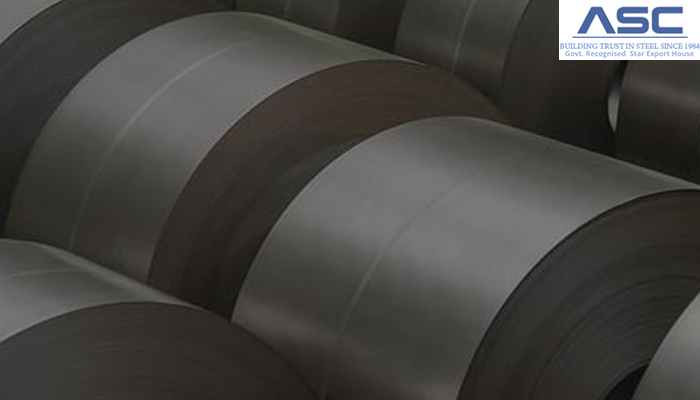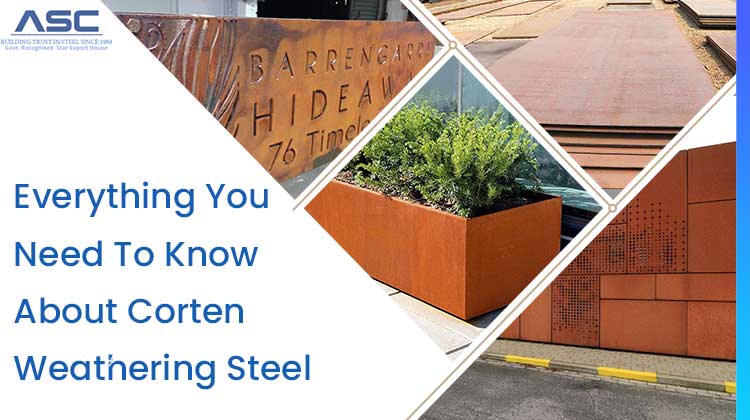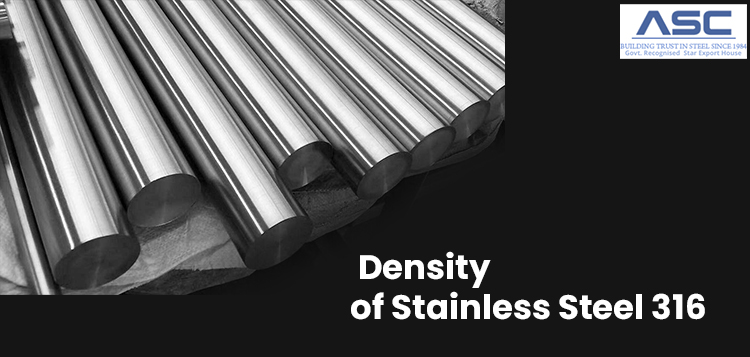Inconel vs Hastelloy
by ASC
Posted on May 08, 2022 at 10:25 AM

What is Hastelloy?
Hastelloy is an alloy of nickel and molybdenum. It is available in several grades, many of which are nickel chromium molybdenum alloys. Although each Hastelloy grade was developed for a distinct use, they are all extremely corrosion-resistant. At high temperatures, Hastelloy is strengthened and hardened, making it perfect for welding applications. It's easy to shape and build. They can be forged and cold-worked because of their ductility. Hastelloy is a suitable choice for high-temperature applications because of its outstanding resistance to strongly oxidizing and reducing chemicals. In the chemical and petrochemical sectors, pipes and valves are widely used. It works well in heat exchangers and pressure vessels, as well as nuclear and chemical reactors.
Inconel vs Hastelloy: Which one is right for your application?
Inconel and Hastelloy are both high-performance alloys, but they excel in different environments. Inconel, with its exceptional strength and resistance to high temperatures, is ideal for applications like aerospace, power generation, and heat exchangers. On the other hand, Hastelloy is renowned for its superior corrosion resistance, making it perfect for chemical processing, marine environments, and industries handling harsh acids.
Choosing the right material depends on your project's specific needs. Need expert advice to decide between Inconel and Hastelloy?
Contact us today for personalized guidance and high-quality alloy solutions!
Hastelloy vs. Inconel Price
Choosing between Hastelloy and Inconel often comes down to your project's needs and budget. While Hastelloy typically offers superior corrosion resistance, especially in harsh chemical environments, Inconel stands out for its exceptional strength at high temperatures. The price of these alloys can vary based on grade, availability, and market conditions. Contact us today for competitive pricing on Hastelloy and Inconel and find the perfect alloy for your application!
Hastelloy Equivalent Grades
Hastelloy equivalent materials are strong alloys that offer similar corrosion resistance and durability in challenging environments. Hastelloy equivalent materials are widely used in industries such as chemical processing, aerospace, and marine applications. Explore the detailed specifications and applications of Hastelloy equivalents below to find the right material for your needs.
| STANDARD | WERKSTOFF NR. | UNS | GOST | AFNOR | JIS | OR | EN |
| Hastelloy C22 | 2.4602 | N06022 | - | - | NW 6022 | - | NiCr21Mo14W |
| Hastelloy C276 | 2.4819 | N10276 | ХН65МВУ | - | NW 0276 | ЭП760 | NiMo16Cr15W |
| Hastelloy B2 | 2.4617 | N10665 | |||||
| Hastelloy B3 | 2.4600 | N10675 | |||||
| Hastelloy C4 | 2.4610 | N06455 | |||||
| Hastelloy C-22HS | - | N07022 | |||||
| Hastelloy C2000 | 2.4675 | N06200 | |||||
| Hastelloy Hybrid BC1 | 2.4708 | N10362 | |||||
| Hastelloy X | 2.4665 | N06002 |
Hastelloy Chemical Composition
Hastelloy composition includes nickel, molybdenum, chromium, iron, and cobalt, providing outstanding corrosion resistance in extreme environments. With up to 60% nickel, it is specifically designed to endure both oxidizing and reducing conditions. Explore the detailed Hastelloy composition below to choose the best material for your applications.
| Alloy* | C% | Co% | Cr% | Mo% | V% | W% | Ai% | Cu% | Nb % | Ti% | Fe% | Ni% | Other% |
| Hastelloy B | 0.1 | 1.25 | 0.6 | 28 | 0.3 | - | - | - | - | - | 5.5 | rest/bal | Mn 0.80; Si 0.70 |
| Hastelloy B2 / Hastelloy B-2 | 0.02 | 1 | 1 | 26.0-30.0 | - | - | - | - | - | - | 2 | rest/bal | Mn 1.0, Si 0.10 |
| Hastelloy C | 0.07 | 1.25 | 16 | 17 | 0.3 | 40 | - | - | - | - | 5.75 | rest/bal | Mn 1.0; Si 0.70 |
| Hastelloy C4 / Hastelloy C-4 | 0.015 | 2 | 14.0-18.0 | 14.0-17.0 | - | - | - | - | - | 0..70 | 3 | rest/bal | Mn 1.0 ; Si 0.08 |
| Hastelloy C276 / Hastelloy C-276 | 0.02 | 2.5 | 14.0-16.5 | 15.0-17.0 | 0.35 | 3.0-4.5 | - | - | - | - | 4.0-7.0 | rest/bal | Mn 1.0; Si 0.05 |
| Hastelloy F | 0.02 | 1.25 | 22 | 6.5 | - | 0.5 | - | - | 2.1 | - | 21 | rest/bal | Mn 1.50; Si 0.50 |
| Hastelloy G | 0.05 | 2.5 | 21.0-23.5 | 5.5-7.5 | - | 1 | - | 1.5-2.5 | 1.7-2.5 | - | 18.0-21.0 | rest/bal | Mn 1.0-2.0; P0.04; Si 1.0; |
| Hastelloy G2 / Hastelloy G-2 | 0.03 | - | 23.0-26.0 | 5.0-7.0 | - | - | - | 0.70-1.20 | - | 0.70-1.50 | rest/bal | 47.0-52.0 | Mn 1.0; Si 1.0 |
| Hastelloy N | 0.06 | 0.25 | 7 | 16.5 | - | 0.2 | - | 0.1 | - | - | 3 | rest/bal | Mn 0.40; Si 0.25; B 0.01 |
| Hastelloy S | 0.02 | 2 | 15.5 | 14.5 | 0.6 | 1 | 0.2 | - | - | - | 3 | rest/bal | Mn 0.50; Si 0.40; B0.0009; La 0.02 |
| Hastelloy W | 0.06 | 1.25 | 5 | 24.5 | - | - | - | - | - | - | 5.5 | rest/bal | Mn 0.050; Si 0.50 |
| Hastelloy X | 0.1 | 1.5 | 22 | 9 | - | 0.6 | - | - | - | 18.5 | - | rest/bal | Mn 0.6; Si 0.60 |
Hastelloy Melting Point, Density and Tensile Strength
| Density | Melting Point | Tensile Strength | Yield Strength (0.2%Offset) | Elongation | |
| C22 | 8.69 g/cm3 | 1399 °C (2550 °F) | Psi – 1,00,000 , MPa – 690 | Psi – 45000 , MPa – 310 | 45 % |
| C276 | 8.89 g/cm33 | 1370 °C (2500 °F) | Psi – 1,15,000 , MPa – 790 | Psi – 52,000 , MPa – 355 | 40% |
| B2 | 9.2 g/cm3 | 1370 °C (2550 °F) | Psi – 1,15,000 , MPa –760 | Psi – 52,000 , MPa – 350 | 40% |
| B3 | 9.2 g/cm3 | 1370 °C (2550 °F) | Psi – 1,15,000 , MPa –760 | Psi – 52,000 , MPa – 350 | 40% |
| C4 | 8.64 g/cm3 | 1350-1400 °C | 783 | 365 | 55% |
| Hybrid BC1 | 8.83 g/cm³ | 1343 - 1443°C | 725 | 310 | 40% |
| X | 8.22 g/cm³ | 1355°C | 655 MPa | 240 MPa | 35% |
What is Inconel?
Inconel is a corrosion-resistant and oxidation-resistant alloy that is ideally suited for high-temperature and high-pressure purposes. When Inconel alloy is treated, a thick, persistent oxide layer forms, protecting the surface from further damage. The strength of Inconel varies with temperature. It produces high temperature strength by solid solution strengthening or precipitation hardening, depending on the alloy. Inconel is a metal used extensively for high-temperature purposes.Read More about - What is Inconel and Why to Use it?
Inconel Chemical Composition
| Inconel | Element (% by mass) | ||||||||||||||
| Ni | Cr | Fe | Mo | Nb | Co | Mn | Cu | Al | Ti | Si | C | S | P | B | |
| 600 | 72.0 | 14.0–17.0 | 6.0–10.0 | 1.0 | 0.5 | 0.5 | 0.15 | 0.015 | |||||||
| 617 | 44.2–56.0 | 20.0–24.0 | 3.0 | 8.0–10.0 | 10.0–15.0 | 0.5 | 0.5 | 0.8–1.5 | 0.6 | 0.5 | 0.15 | 0.015 | 0.015 | 0.006 | |
| 625 | 58.0 | 20.0–23.0 | 5.0 | 8.0–10.0 | 3.15–4.15 | 1.0 | 0.5 | 0.4 | 0.4 | 0.5 | 0.1 | 0.015 | 0.015 | ||
| 690 | 59.5 | 30 | 9.2 | 0.35 | 0.01 | 0.02 | 0.35 | 0.019 | 0.003 | ||||||
| 718 | 50.0–55.0 | 17.0–21.0 | balance | 2.8–3.3 | 4.75–5.5 | 1.0 | 0.35 | 0.2–0.8 | 0.65–1.15 | 0.3 | 0.35 | 0.08 | 0.015 | 0.015 | 0.006 |
| X-750 | 70.0 | 14.0–17.0 | 5.0–9.0 | 0.7–1.2 | 1.0 | 1.0 | 0.5 | 0.4–1.0 | 2.25–2.75 | 0.5 | 0.08 | 0.01 | |||
Inconel Melting Point, Density and Tensile Strength
| Density | Melting Point | Tensile Strength | Yield Strength (0.2%Offset) | Elongation | |
| 600 | 8.47 g/cm3 | 1413 °C (2580 °F) | Psi – 95,000 , MPa – 655 | Psi – 45,000 , MPa – 310 | 40 % |
| 601 | 8.1 g/cm3 | 1411 °C (2571 °F) | Psi – 80,000 , MPa – 550 | Psi – 30,000 , MPa – 205 | 30 % |
| 617 | 8.3g/cm³ | 1363°C | ≥ 485 MPa | ≥ 275 MPa | 25 % |
| 625 | 8.4 g/cm3 | 1350 °C (2460 °F) | Psi – 135,000 , MPa – 930 | Psi – 75,000 , MPa – 517 | 42.5 % |
| 690 | 8.3g/cm³ | 1363°C | ≥ 485 MPa | ≥ 275 MPa | 25 % |
| 718 | 8.2 g/cm3 | 1350 °C (2460 °F) | Psi – 135,000 , MPa – 930 | Psi – 70,000 , MPa – 482 | 45 % |
| 725 | 8.31 g/cm3 | 1271°C-1343 °C | 1137 MPa | 827 MPa | 20 % |
| X-750 | 8.28 g/cm3 | 1430°C | 1267 MPa | 868 MPa | 25 % |
Inconel Equivalent Grades
| STANDARD | WERKSTOFF NR. | UNS | GOST | AFNOR | JIS | BS | EN | OR |
| Inconel 600 | 2.4816 | N06600 | МНЖМц 28-2,5-1,5 | NC15FE11M | NCF 600 | NA 13 | NiCr15Fe | ЭИ868 |
| Inconel 601 | 2.4851 | N06601 | XH60BT | NC23FeA | NCF 601 | NA 49 | NiCr23Fe | ЭИ868 |
| Inconel 617 | 2.4663 | N06617 | ||||||
| Inconel 625 | 2.4856 | N06625 | ХН75МБТЮ | NC22DNB4M | NCF 625 | NA 21 | NiCr22Mo9Nb | ЭИ602 |
| Inconel 690 | 2.4642 | N06690 | ||||||
| Inconel 718 | 2.4668 | N07718 | ||||||
| Inconel 725 | - | N07725 | ||||||
| Inconel X-750 | 2.4669 | N07750 |
Mechanical Behavior
Inconel and Hastelloy are both solid solution reinforced alloys with equivalent mechanical properties. It's just that they use a lot of different solid solution strengthening components.Application
As shown, both alloys have a wide variety of functions. And, to a large extent, their applicability range is extremely close. This does not, however, mean that the two alloys can be used alternately. According to the application environment, various alloys should be employed in the same application.In oil and gas applications, for example, the subsurface environment of various oil fields varies greatly. Inconel is a superior choice when oil fields are subjected to an oxidising environment. In oil fields with declining conditions, Hastelloy should be used.
Hastelloy will cost a little extra because molybdenum is more costly than chromium. Their prices, on the other hand, are not vastly different.
Conclusion
Corrosion resistance is strong in both Inconel and Hastelloy. For oxidising environments, Inconel is a better choice. Hastelloy C-276 is preferable for decreasing conditions.Both alloys are strengthened by solid solution. Despite the fact that the components that have a solid solution strengthening effect are different, the mechanical characteristics of the two are very similar.The two alloys have similar application ranges; however they serve distinct functions in the same application.
Amardeep Steel Centre holds the expertises in manufacturing & fabricating Inconel and Hastelloy products to your specifications and needs. Please contact our experts if you have any purchasing requirements.
FAQs
1. Is Hastelloy better than Inconel?
They are a good fit for applications that need to withstand high heat, high pressure, and highly corrosive substances. However, they also differ in many regards. Inconel's unique composition gives it more properties that are suitable for oxidizing environments, while Hatelloy fares better in acidic environments.
2. What is the difference between Inconel 625 and C276?
Comparing Inconel 625 and Hastelloy C-276, Inconel 625 has a higher chromium content, while Hastelloy C-276 has a higher molybdenum content. This makes them different in corrosion resistance in different environments.
3. Can Inconel be welded?
Inconel, a type of nickel-based alloy known for its high corrosion resistance, temperature resistance, and tensile strength, requires welding procedures. Welding enables the alloys to better withstand the harsh conditions (high temperature, high stress) found in a variety of industrial settings.

What is Low Alloy Steel - Properties, Uses, Grades & Composition
Low-alloy steel is a type of metal that is made by mixing steel with another metal that has good qualities. About 1% to 5% of the alloying elements

